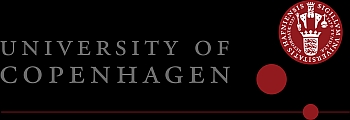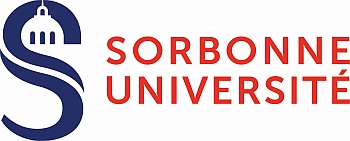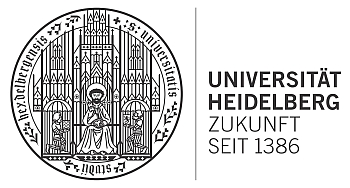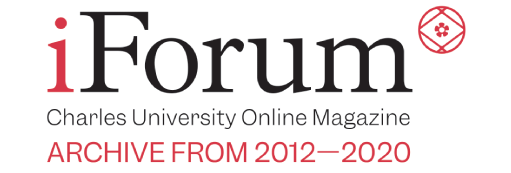Martin Rychlík • 14 November 2019
The Velvet Revolution… as seen by our 4EU+ Alliance partners
This week Czechs are marking the 30th anniversary of the Velvet Revolution which began on November 17, 1989. Representatives from five partner universities within the prestigious 4EU+ Alliance responded in our recent special issue. Read how they look back on the events which brought down more than 40 years of communism in Czechoslovakia.

University of Warsaw

After the end of World War II, the countries of Western Europe enjoyed democratic freedom and the free market economy, whereas countries of Central and Eastern Europe had to face criminal communist regimes. The years 1956, 1968, 1981 and finally 1989 demonstrated that their spirit of freedom could not be broken and that the regimes had to fall. Poles, who were already enjoying the first non-communist Prime Minister Tadeusz Mazowiecki, watched the “Sametová revoluce” with great interest and supported it wholeheartedly. I myself remember keeping my fingers crossed while listening to Václav Havel’s speeches and hoping that our Czech and Slovak friends would succeed. We also cannot forget about the role of universities in the transition of 1989. I can boldly state that the changes of 1989 could not have taken place without Charles University, the University of Warsaw and many others. Professors and especially students were among the first to stand up to the regime, despite fears that the regime would take its revenge if they were not successful. Today we can proudly say: Yes, we did it! Congratulations on the 30th anniversary of the Velvet Revolution!
Maciej Duszczyk
Vice-Rector
University of Copenhagen

I grew up in post-war Europe. During my childhood, the division of Europe in two blocs, East and West, was a fact. It was just the way things were. The Cold War, and especially the fear of a devastating nuclear war, was a common theme in adult conversations. But it was also implicitly understood that a divided Europe was not how “things used to be”.
During my student years at university, I visited several Central and Eastern European countries. The differences between our systems were striking, but so were the similarities between our people and our shared cultural heritage.
In September 1989, one year into my PhD, I attended my first scientific conference. It was in Warsaw. A Solidarity-led government had just taken office a few weeks earlier. It was an overwhelming experience to meet young scientists from Poland, who were both exhilarated and anxious. A reunited Europe was suddenly a possibility, but it could not yet be taken for granted. However, a few months later, thanks to the Velvet Revolution in the Czech Republic and the fall of the Berlin Wall, it was clear to all that the process was irreversible (…)
The universities of Europe have always been interconnected, even during their time of separation. Almost like a family. We were established with the same purpose and we share the same basic ideas: that research and research-based education are essential for the development of people and societies. We are even formed by mutual organisational inspiration; the University of Copenhagen was initially formed by inspiration from Charles University. So, in the bigger picture, we are tied to each other like siblings. During the Cold War, these ties weakened, but like real siblings, who were separated by destiny and then reunited, we have quickly found each other in fruitful cooperation within the EU. I am thrilled that with the establishment of our new partnership 4EU+, we will grow an even deeper and more mutually valuable collaboration to the benefit of European society at large.
Henrik C. Wegener
Rector
Sorbonne University

The Velvet Revolution was a wondrous display of liberty. It was a relief after the terrible events of ‘68. It was a triumph for values we hold dear: democracy, human rights, free-thinking, and free expression.
It started with student protests, an amazing and humbling reminder of our role in society: universities are places for ideas to grow, for the youth to challenge the status quo – and we should keep nurturing such drive in our communities.
It evoked our collective European spirit, harkening back to the Age of Enlightenment, and paved the way for a united Europe, founded on solidarity and harmonious cooperation among peers. Universities are at the forefront of this project.
Indeed, the memory of the Velvet Revolution should inspire us all – as institutions and individuals – to keep fighting, together, for the values we share.
Serge Fdida
Vice-President
Heidelberg University

On the 30th anniversary of the “Velvet Revolution”, Heidelberg University most warmly congratulates Charles University and expresses its solidarity with her Czech partners.
The significance and implications of this historical event which began as a student revolution and resulted in the peaceful transition of power in what was then Czechoslovakia, are particularly well appreciated in Heidelberg and Germany as a whole.
Indeed, in November, Germany will also be celebrating one of the most important events in post-war Germany: the peaceful fall of the Berlin Wall on 9 November 1989. Just one week before the “Velvet Revolution”, and set in a very similar political context, the fall of the Berlin Wall marked the beginning of a reunited Germany.
Heidelberg University is honoured to share with Charles University not only a similar recent history but also a bright common future, especially as partners in the recently founded 4EU+ European University Alliance.
Marc-Philippe Weller
Vice-Rector
University of Milan

The 1989 Velvet Revolution, with its twofold character of strength but also moderation, has consolidated among Italians a positive image of Prague and its artistic, cultural and political heritage. The election of a poet, writer, and philosopher like Václav Havel as a guide of the Czechoslovak Republic in 1990, was perceived in Italy and in Europe as a major signal that a new era was beginning, marked by increasing dialogue and cooperation.
Our rector, Elio Franzini, emphasizes that our university, over the last 30 years, has continuously dedicated conferences and lectures to different moments in Czech history. As an example, a major conference entitled “The Fall of the Walls: Twenty Years Later”, was organized at the University of Milan in 2009, bringing together scholars and some of the main protagonists of those events, such as Václav Havel and Lech Wałesa.
The rector is also glad to announce that today, in order to remember the Velvet Revolution with its profound cultural impact (starting with Havel’s legacy) the University of Milan will install a “Václav Havel bench” in its main building. The artwork will be composed by two wooden armchairs alongside a small table next to a tree. The initiative, part of a large commemorative project launched all over the world, represents an invitation to further dialogue and shared reflection. We would indeed like to continue the path of educational and scientific collaboration, at every possible level, made possible by the extensive EU framework of projects and agreements as well as by the input of our respective universities, both marked by the idea of combining tradition and innovation in a creative way.
Antonella Baldi
Vice-Rector
